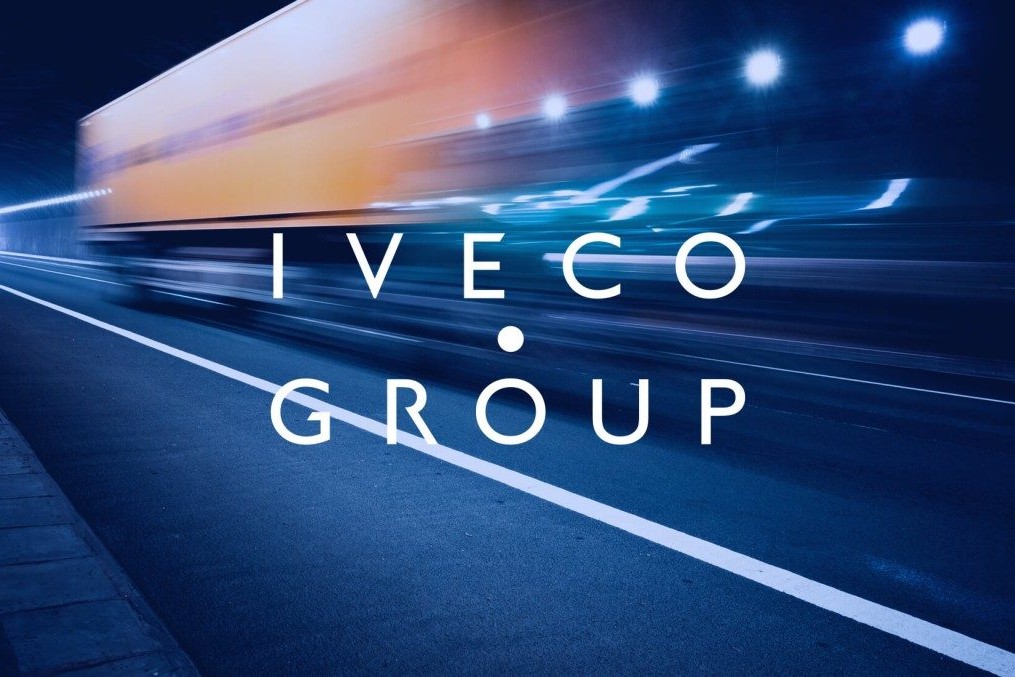Best of 2021
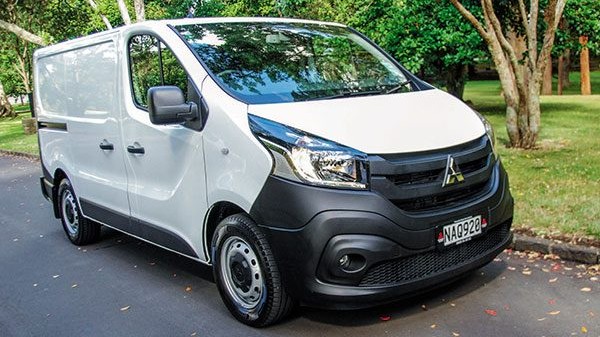
Highlights from 2021 included the large Isuzu Daily van and the standard-size Mitsubishi Express to the American ‘truck’ styling of the latest Nissan Navara and the more streamlined shape of the Mazda BT-50.
It’s round-up time of year again, our second since Covid-19 arrived and threw a grenade into life as we knew it. Overseas, illness, lockdowns and closed borders acted like the proverbial pebble dropped into a pond, and even as New Zealanders spent much of the year living what passed as normal life in this brave new world, that pebble’s ripples still impacted local business.
Closed borders don’t just stop tourism, but goods. Covid-19’s effects moved like a malicious Mexican wave through overseas manufacturing strongholds, resulting in shortages of components that affected the production of everything from cameras to cars and trucks. At the same time, reduced ship and air traffic cut back on the arrival of goods – to transport cargo, or those needed to keep the country’s commercial wheels rolling.
All that impacted New Zealand Trucking, too – if nothing else because our team of writers couldn’t access the usual array of newly launched vehicles.

 New-design vans are returning to longer bonnets to improve impact safety.
New-design vans are returning to longer bonnets to improve impact safety.
So, this year’s wrap covers a smaller range than usual, in a sector of the market never bustling with new vehicle launches: vans often have a 10-year lifespan, considerably longer than cars or even utes.
Our comparo is, of course, no less valid. Any business buying a new vehicle is looking for the best at its budget, and when it comes to vehicles, best usually means newest – especially now a vehicle is as much a workplace as the warehouse floor and needs to be as safe.
The biggest news, of course, was Mitsubishi’s Express van, a long-overdue replacement for the L300, which exited the New Zealand market in 2015 when it couldn’t meet modern safety standards.
A redesign of Renault’s Trafic, built in France, the Express comes as a short wheelbase 2WD panel van, with a twin-turbo 1.6-litre diesel and six-speed manual, or the two-litre single turbo and six-speed auto we drove. Its variable-nozzle turbo with speed sensor makes for fuel efficiency, as does the double-clutch auto, both of which we put to work on a longer-distance laden highway run as well as the more usual round-town deliverystyle circuit. Two sliding side doors and paired rear doors, which open out to 160°, eased loading and unloading, and there’s a trap door for longer loads. We liked the lifting seatbase that revealed a 46-litre compartment for valuables, the efficient suspension which, not surprisingly, was at its best with a load aboard, and plentiful cabin storage.
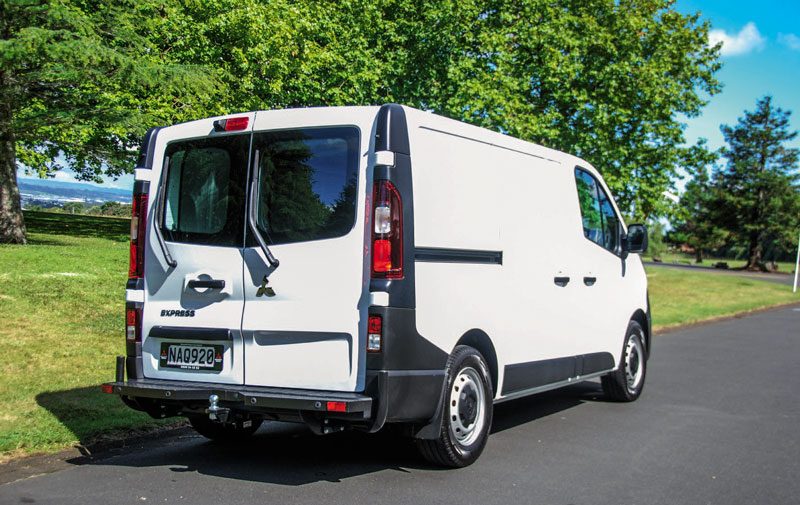
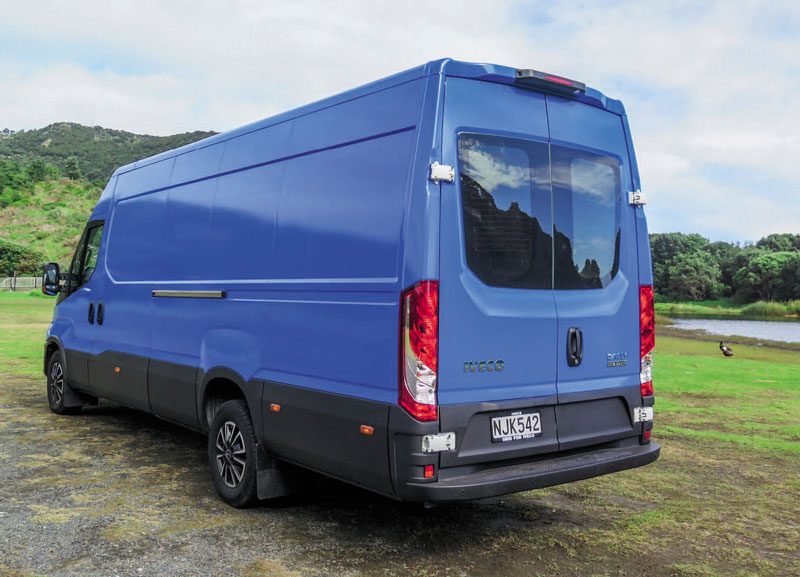 Mitsubishi Express adds some rear-end design interest to a basic cube with the vertical light cluster, while Iveco can’t disguise its added height.
Mitsubishi Express adds some rear-end design interest to a basic cube with the vertical light cluster, while Iveco can’t disguise its added height.
The plain layout delivered decent ergonomics for various body sizes while cornering headlights were especially appreciated when manoeuvring after dark.
Iveco’s Daily has also been a constant in the commercial market, as it debuted back in 1978.
Our three-litre test example was loaded with safety tech – including crosswind assist, appreciated due to Daily’s sheer size. While the Express is compact, the Daily measured over 7m long. Handling and engine response was impressive. This is a large van, yet it tackled country roads without complaint. Clearly some care is needed around town due to its outsize footprint, but even an unfamiliar driver can soon get comfortable with manoeuvres – while comfort in the cabin is a given if the buyer opts for the independently suspended seat, which adjusts according to driver weight.
Safety tech even includes Roll Over Mitigation and Load Adaptive Control, while the load bay is easily accessed, with the back doors including stops at 90° and 270°.
Naturally, this larger vehicle retails at a higher price than the Mitsi, at $74,815 as standard – without the array of targeted packages available.
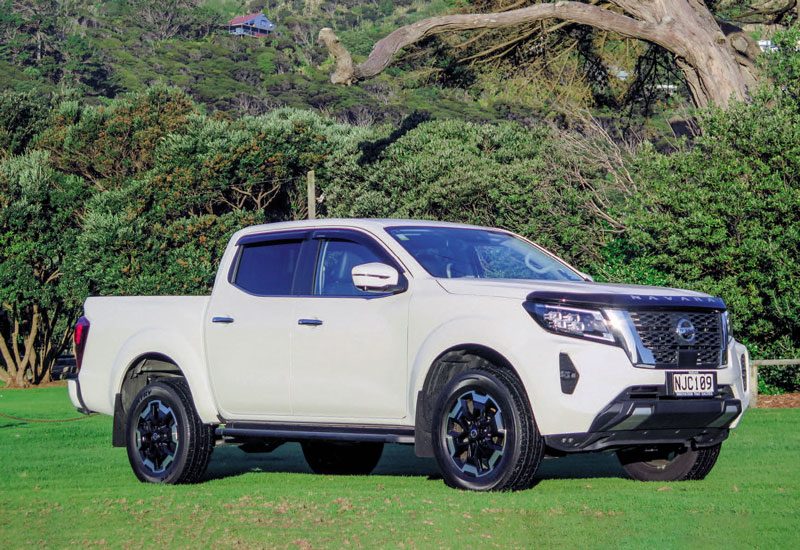
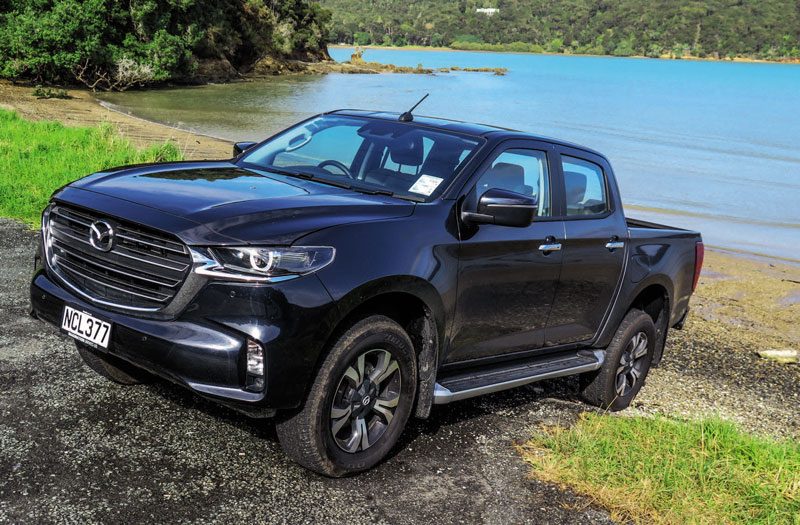 Nissan takes an all-American line for ute design; the Mazda is a more streamlined contrast.
Nissan takes an all-American line for ute design; the Mazda is a more streamlined contrast.
If you need a van, you may not look at a ute, but the latter still has plenty to offer – especially these days, with increasingly car-like interiors and road-friendly suspension.
Ford’s Ranger was hit by Covid-19 issues cutting parts and delivery numbers, but we tested other options, not least the Nissan Navara. Compared with the outgoing generation – little had changed since 2014 – this latest Navara looks like an all-American battering ram, but if you like that look, you will love this. Also loaded with tech – lanedeparture warning, lane intervention, auto emergency braking and forward crash alert all included in the model we tested – a 4×4 double cab with rear diff lock, an off-road monitor and reverse parking camera with surround view, including rear cross traffic alert. Forget the larger tray and bigger brakes – if you spend a lot of time steering and backing around piles of timber or small unloading spaces, that rear vision alone will save you time in fenderbender fixes.
Navara now offers 16 variants, including a 2.3-litre twin-turbo diesel 4×2. We noted a quieter, less jolting ride and greater refinement, though swapping drivers underlined, we’d have liked reach adjust for the steering wheel.
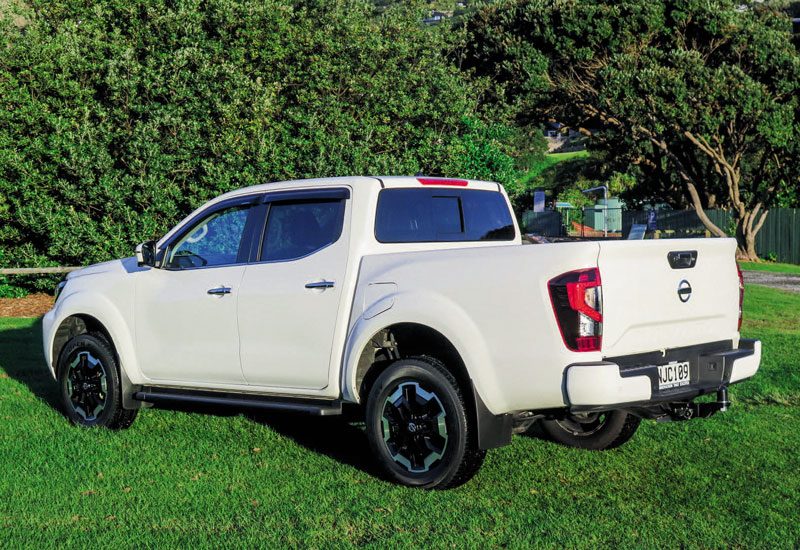
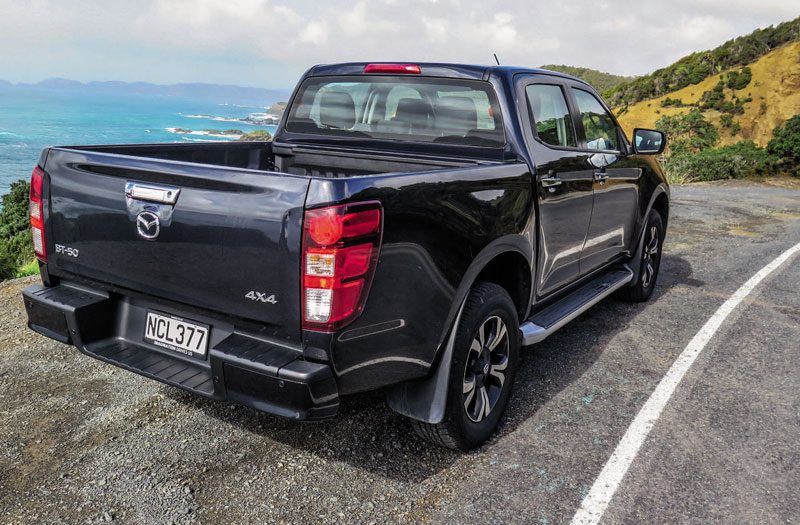 The Nissan even appears boxier from the rear compared with the Mazda.
The Nissan even appears boxier from the rear compared with the Mazda.
We like the Utili-Track twochannel cargo system in the tray and Navara’s $41,990 starting price, though this higher-end version retails higher, just below the Ford it has its sights on.
Last but not least, Mazda’s BT-50, now with mechanicals and structure shared with the newest Isuzu D-Max.
Powered by a three-litre diesel with a six-speed auto, we sampled the GTX 4×4 with a locking rear diff, and again, plenty of safety tech, including a blind spot monitor, and even traffic sign recognition as well as trailer sway control, and more.
If you hate the Nissan’s boxy look, you’ll love the sharper design and the fact the GTX doesn’t give away much spec to the higherpriced Limited. We enjoyed its on-road manners, too, though we couldn’t test it fully off-road. Instead, we appreciate the low-end torque and excellent traction control systems on slippery but not too steep or lumpy going. Really, our only quibble was that the lane-keeping alert was a little too trigger-happy and intrusive on back roads.
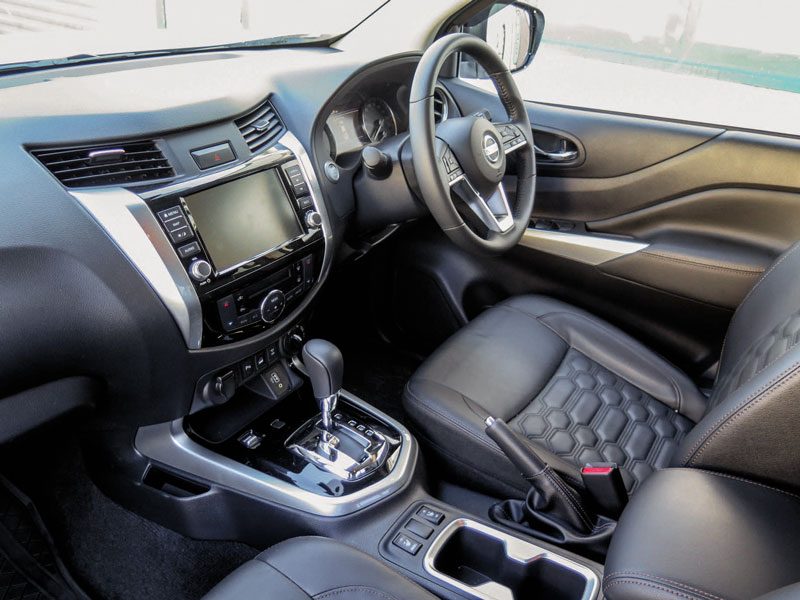
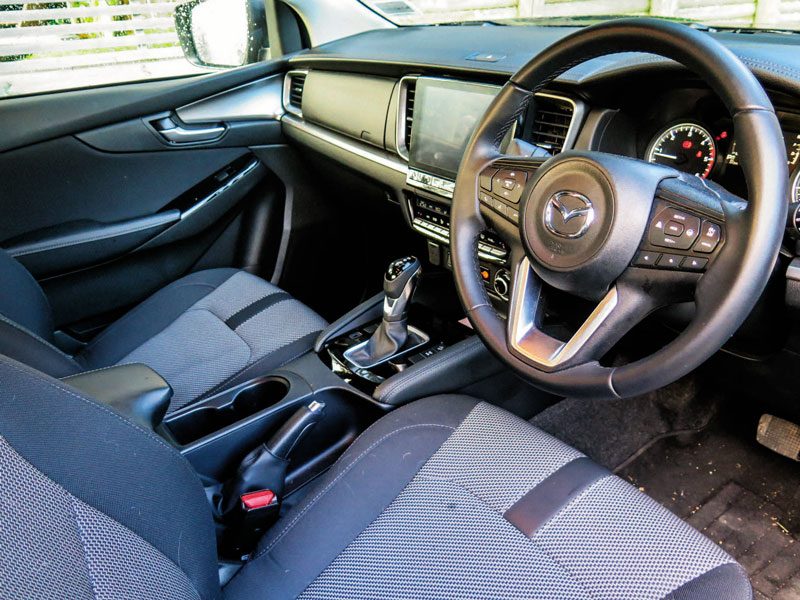 The Mazda ute interior is very car-like, as is Nissan’s, but the latter’s leather seats trump the more affordable Mazda’s cloth pews.
The Mazda ute interior is very car-like, as is Nissan’s, but the latter’s leather seats trump the more affordable Mazda’s cloth pews.
The Mitsubishi Express retailed at $44,990, with the smaller 1.6 with its higher towing and payload capacity undercutting it at $39,990.
You pay a lot more for the Iveco Daily – from $74,815 – not least because it’s so much larger, with 4680/7252mm cargo/overall length to the Mitsi’s 2537/4999mm.
However, the Mitsubishi’s 1080kg payload just beat the bigger Isuzu’s 1067kg, the latter fighting back with a 3500kg tow rating to the smaller van’s 1715kg. Price and tow rating may be the deciders for you.
Regarding the utes, we’re not all fans of that blunt nose but we couldn’t dispute how well matched the $67,490 Nissan’s engine and transmission are, nor what a good blend this ute delivers of on-road manners and cargo useability.
As for the $58,490 Mazda tested, we liked its sleeker looks, its 1070kg payload (to the Nissan’s 1024kg), and of course its price, while missing the surety of the Nissan’s surround camera features.
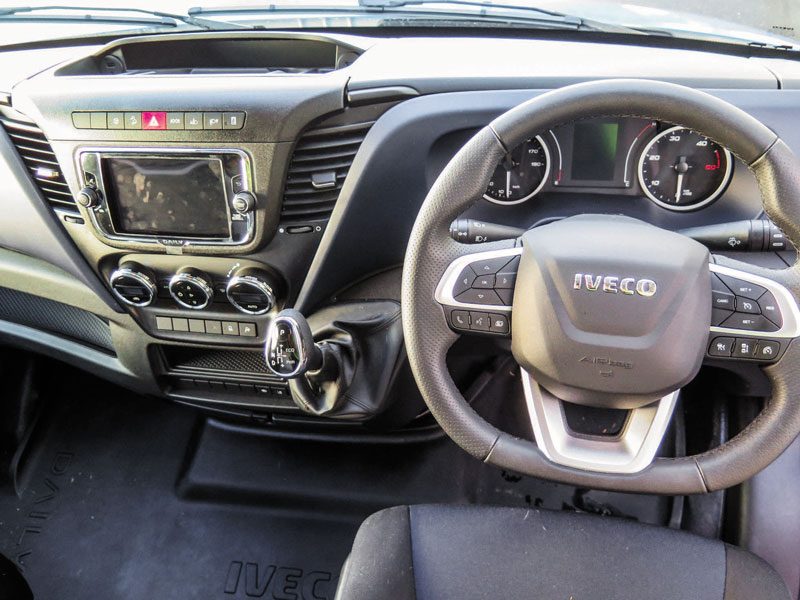
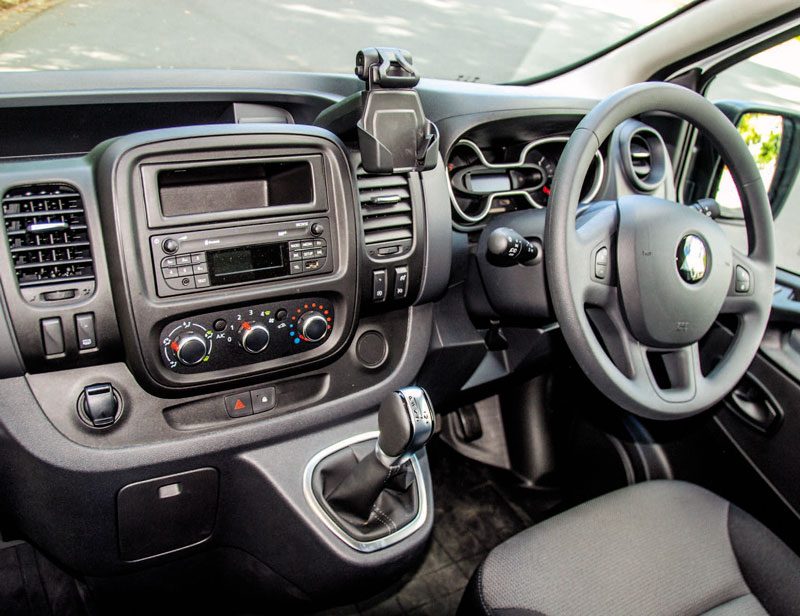
The Express’s cabin is utilitarian but comfy and usable. The Iveco is equally utilitarian but large controls and the central V design of the dash add more visual interest.



